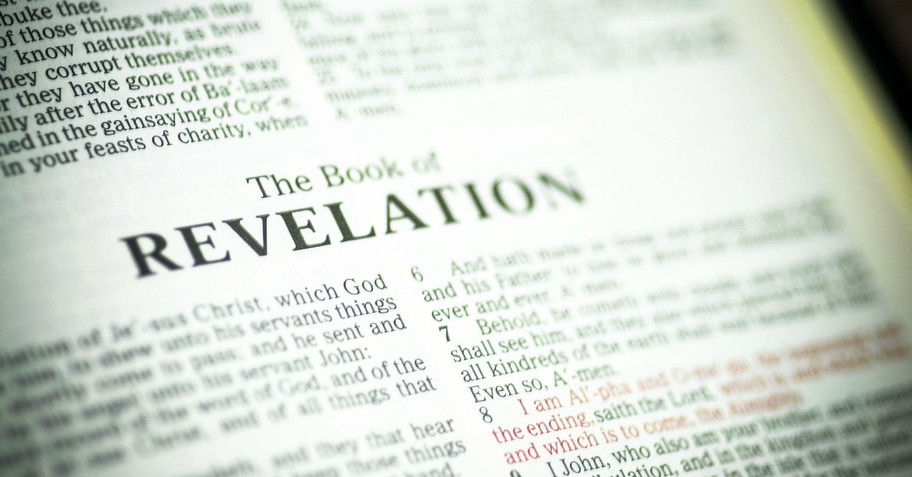The question of a Revelation timeline must be answered only after grasping the divine book's message and meaning. Otherwise, we will most certainly come away frustrated and, even worse, wrong about God and His Word. So let us begin with the message and meaning of the Book of Revelation.
Revelation is the most pastoral book in the Bible and the most avoided… why?
Photo Credit: ©iStock/Getty Images Plus/Design Pics
Why Revelation Is Difficult
Many believers do approach the Book of Revelation with a sense of personal inadequacy. In the worst cases, believers have been informed by untaught teachers that you need an expert to understand the complex systems in place in Revelation—or you need to adopt the system yourself. This idea is pressed upon you on those occasions when a verse from Revelation is read, and the teacher gives an interpretation that seems so far-fetched, you asked yourself, "How did he get that from this?" Good question. Indeed, some systems of interpretation require "expert" interpreters who can interpret each verse within a larger (and famously inaccurate) systematic framework. That is the problem. To impose an external manmade framework upon the Book of Revelation, or any other part of the Bible, is an almost guarantee that the people to whom Christ spoke will miss His message. We must come to the Bible and let God speak without our imposed ideas and theological frameworks.
The Bible speaks. We just need to get out of the way and let the Word resound despite every question, every doubt, and every unsolved mystery. Even if you are baffled, you ask yourself, "I wonder why the Lord put this in a way that seems mysterious? What does it mean?" That is a more Biblical response that contriving a fanciful explanation that borders on Gnosticism (secret knowledge from God).
So, the problem of symbolism and imagery and trying to make sense of it all cannot be solved by imposing a man-made system, but only by drawing out the God-breathed Word and the Spirit-controlled intent of the passages within this glorious message. To put it another way, there is wonder in the mystery. Don’t remove the mystery.
So, if we came to "the Revelation of Jesus Christ" (verse 1, thus the book's title) without preexisting systems of interpretation, what would we find?

Revelation Is an Apocalyptic Book
Images are given by Jesus. Then, Jesus interprets the signs:
And when I saw Him, I fell at His feet as dead. But He laid His right hand on me, saying to me, “Do not be afraid; I am the First and the Last. I am He who lives, and was dead, and behold, I am alive forevermore. Amen. And I have the keys of Hades and of Death. Write the things which you have seen, and the things which are, and the things which will take place after this. The mystery of the seven stars which you saw in My right hand, and the seven golden lampstands: The seven stars are the angels of the seven churches, and the seven lampstands which you saw are the seven churches (Revelation 1:17b-20 NKJV).
The book of Revelation, like the book of Daniel, is an apocalyptic book: that is, it uses fantastic imagery to convey ordinary, often, climactic, catastrophic events. The Book of Revelation is most certainly eschatological. Eschatology is teaching concerned with ultimate consequences (e.g., What happens when I die? Is there a Heaven? What about Hell? Will there be a judgment day? Is Jesus coming again? When? How?).
One of the reasons that many find Daniel or Revelation confusing is a failure to acknowledge and read the text as apocalyptic literature. The hermeneutic for Revelation — that is, the way we interpret the text of Revelation — is established by the Lord Jesus in Chapter 1. Jesus had spoken of seven golden lampstands and seven stars. What in the world could this mean? So, in Revelation 1:12 Jesus precludes the understandable query by declaring to John that the seven lampstands are actually seven churches. The stars represent messengers, or, for some, a literal translation of the word for angels. So, Jesus gives the hermeneutical key that will serve to unlock the remarkable, fast-moving, colorful, at times frightening, imagery in the book of Revelation.
It is very important to stay with the hermeneutical value that Jesus prescribed in Chapter 1: interpret the passage according to the device of using extraordinary images to communicate spiritual realities. Some have criticized this approach as not believing the written Word of God as it is. This is a logical fallacy. Indeed, we trust the Word of the Lord as it is written, which includes literary devices such as metaphor, hyperbole (one of Jesus’ most used devices), and, yes, symbolism. A concrete reading of the text must, then, reject the interpretive keys that Jesus provides for the book. So, we must read the book of Revelation in the way that Jesus intends for us to read it: as symbolism representing spiritual truths, and, even, historical persons and events.
Photo Credit: ©GettyImages/dtimiraos
Revelation Is a Pastoral Book
Another important point in the interpretation of the Revelation timeline is the present suffering that was going on. In addition to being apocalyptic, the book of Revelation is pastoral. The book is designed by our Lord Jesus through the Apostle John to bring comfort and assurance to those who are suffering under an antagonistic world power, the Roman Empire (including the Apostle John who is suffering for Christ in his exile to Patmos). Any exposition of Revelation must begin with the presenting issues being faced by those who would have received and heard this divine communication. However, as we do in all exposition, we seek to discover the timeless truths embedded in the contextual scenario.
Back to our question. Can we discern a timeline in the book of Revelation that will help us to understand the progress towards Judgment Day? I believe that the answer is yes. But here is the caveat: rather than laying out a detailed chronology based upon the apocalyptic imagery and apocalyptic chronology of the book of Revelation, let’s follow the cycles of Revelation, each becoming more intense, and each leading us to Paradise Regained (John Milton, 1671).
Revelation Is Composed with One Story in Seven Escalating Cycles
Revelation is a story of God’s plan of salvation coming through His Son, Jesus Christ. We repent and receive Jesus Christ as our resurrected and reigning Lord and Savior. Satan seeks to stop the miracle of faith. Satan can’t defeat Jesus and He turns on believers. Every attempt to stop the gospel becomes, in the hands of a sovereign God, a way to advance the Kingdom. This story moves through seven expressions, seven octaves, seven escalating stories until the Consummation of time and history.
So, why does the Book of Revelation move through a cycle of seven? In fact, the number seven is a very important number within Revelation. The seventh day of the week is the day that God rested from his creation. Therefore, the number seven is used by the biblical writers to express perfection, fullness, or divine completion, whether of the plan of salvation or the time remaining for the earth.
When reading Revelation, you discern a story is being told. You read through the story, and you sense a completion. “Then I saw . . .” And the same story repeats, but with different scenarios; new images, but a very similar storyline. This cycle repeats through Revelation so that we may divide the book into seven sections, or cycles. They are:
Cycle 1: 7 Letters to the Churches (Rev 1-3)
Cycle 2: 7 Seals (Rev 4-7)
Cycle 3: 7 Trumpets (Rev 8-11)
Cycle 4: 7 Histories (Rev 12-14)
Cycle 5: 7 Bowls (Rev 15-16)
Cycle 6: 7 Messages to Babylon (Rev 17-19)
Cycle 7: Great Consummation (Rev 20-22)
Within these seven divisions of the Revelation, we locate essential truths to help us locate a Revelation timeline.

What Do We Find in the Seven Cycles?
A timely message. First, you would discover a book that describes a fantastic vision given to John which is to be given to the persecuted Church, in that day.
A repeating message. The old, old story is the ruling motif of human history. The story moves forward with greater intensity and cataclysmic occurrences, until the end. The end is, then, the beginning of a New Heaven and a New Earth.
A universal message. Though the letter is clearly written to Roman believers, the text treats the events as descriptions of what happened to God’s people in the past, and what God’s people in the future can expect.
So, after a review of the Book of Revelation, we are better prepared to answer our main question.
Is There a Revelation Timeline? How Should Christians Interpret It?
There is not an earthly Revelation timeline given, but a divine timeline that asserts, “This is how things are. This is why you suffer. Such a cycle shall, eventually, be completed in the eschaton. When Christ returns the present cosmos is reconstructed, as judgment is rendered by Almighty God, and the ultimate disposition of human beings is announced. Then comes a New Heaven and a New Earth. To put a strict timeline upon events that happen beyond the space and time of this present age is illusory, and, therefore quite impossible. From an earthly view, we can say the following things about a Revelation timeline:
- Revelation reveals a timeline that includes past, present, and future.
- Revelation reveals an explanation of unfolding acts in the play, with each scene becoming more intense.
Conclusion
There is a wonderful short confession that is used in many worship services (liturgies) of the global Church. I have conducted worship and used this versicle, myself. More than anything else, the confession tells the story of what theologians call apocalyptic dualism, Christ came and Christ is coming again. That little confession is simply this:
“Christ has died. Christ has risen. Christ will come again.”
That is the Revelation timeline.
In difficult days, let us remember: Christ the Victor is the distilled summary of the Book of Revelation. As I recall one pastor putting it—quite correctly—“always, in the end, Christ wins.”
His victory means that you are “more than conquerors” through him who loved you.
Photo Credit: ©iStock/Getty Images Plus/natasaadzic
Originally published August 09, 2021.








